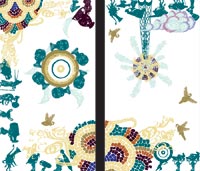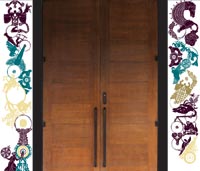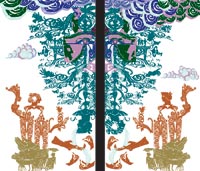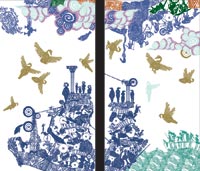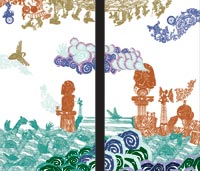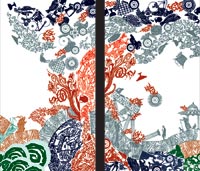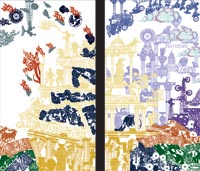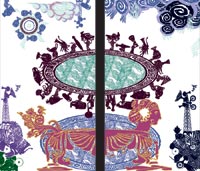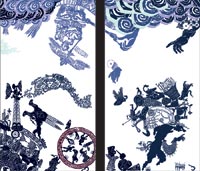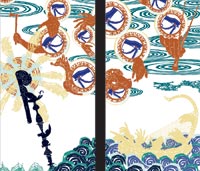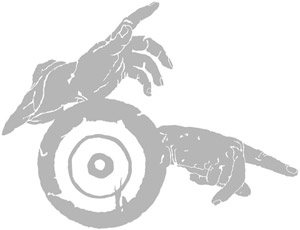Kelsey Museum Windows
In an early phase of this project, I made numerous small sketches to acquaint myself with the artifacts in the Kelsey. I then photographed selected objects from the vantage points that best served my purposes and made over two hundred and fifty small paintings based on those photographs. I translated these paintings into Adobe Illustrator vector files and used those translations to digitally construct my designs for the window installation...
Kelsey Museum Windows
In an early phase of this project, I made numerous small sketches to acquaint myself with the artifacts in the Kelsey. I then photographed selected objects from the vantage points that best served my purposes and made over two hundred and fifty small paintings based on those photographs. I translated these paintings into Adobe Illustrator vector files and used those translations to digitally construct my designs for the window installation.
My vinyl images are not printed but are a mosaic assembled from multiple fragments. Each color is machine-cut from a different roll and applied as a separate physical unit to the windows. The cast vinyl color permeates the material, making it equally vibrant on both sides. With varying degrees of transparency, it responds to the incidence and intensity of light determined by weather and time of day, bathing viewers in shifting sensations of color. At night, silhouettes defined by interior lighting enliven the exteriors, suggesting an oversize cabinet of wonders. With direct sunlight, shadows of the designs projected onto interior surfaces locate viewers inside amidst an insubstantial, floating world of mirroring, reversal, and translation.
With its intricate presence on the outside of the windows, this installation draws attention to the museum buildings even from a distance, evoking objects on view in their collections by weaving elements distilled from my drawings into unexpected visual relationships. Negative spaces within and between design elements frame views of the outside landscape or the interior architecture. Sequence and rhythmic pattern respond to the movement of viewers; the design itself seems to change as viewers move by, suggesting that the space beyond is full of possibilities we have not yet begun to imagine.

Scroll right to view more »
